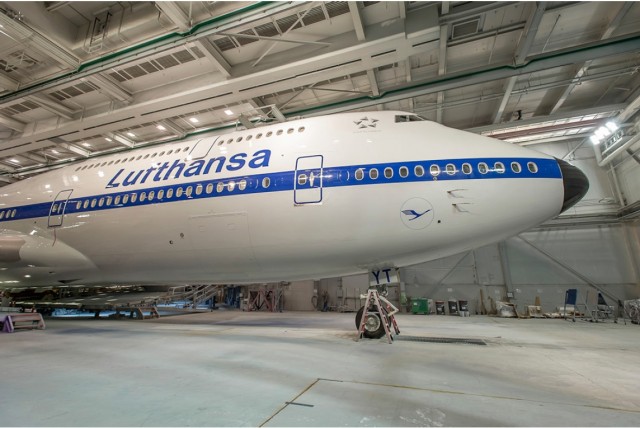
Front part of Lufthansa’s special retro livery on the Boeing 747-8I – Photo: Lufthansa
Lufthansa was the first airline to fly the Boeing 747-8 Intercontinental and now has 16 of the type in service. Over the history of the airline and the 747 program, Lufthansa has been a very good customer. They have operated the 747-100, 200, & 400 (with a good portion of those 747-400s still flying).
The airline, as a whole, has been around since 1926 (in some form or another), during which time they have been through a number of liveries. What better way for an airline to receive their latest aircraft than to paint it in an retro livery?

We are excited to experience Aviation Geek Fest Seattle 2015 (AGF15) on February 21 and 22. We all VERY much appreciate your patience with getting you information and putting the tickets up for sale.
The Full AGF15 tickets sold out in about 30 seconds — crazy. All this point, there are not additional tickets (Full or Mini) for sale.
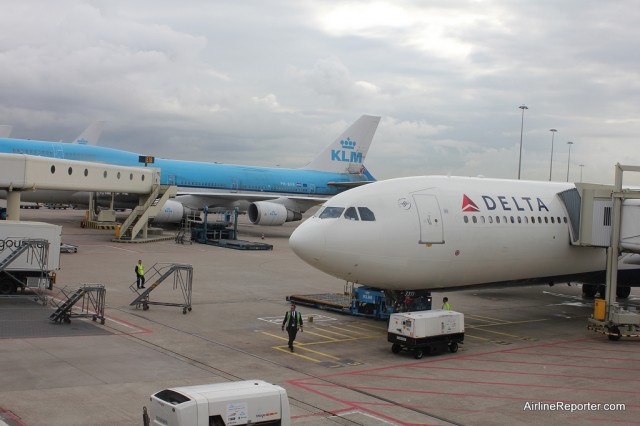
Delta Air Lines Airbus A330, with a KLM Boeing 747-400 in the background, in Amsterdam – Photo: David Parker Brown
At the start of last year, we looked at the results of the 2013 deliveries between Airbus and Boeing. With all the interest in that article, I couldn’t leave it alone for 2014, right? So let’s take a look at how the two big airliner companies did, in what is really the biggest aviation competition around?
2014 was a big year for both Boeing and Airbus. Last year we saw the first delivery of the A350XWB for Airbus, while Boeing also had delivery of the first 787-9 to Air New Zealand (followed closely by ANA).
On the narrowbody front, the A320NEO had its first flight (don’t those engines look like someone strapped giant engines onto the wing and went ’œit will work, trust me’) and the 737 MAX makes it one step closer to rolling out of the Renton factory. There were plenty of orders made to both airliners, but what we really want to know is, who produced and sold the most aircraft?
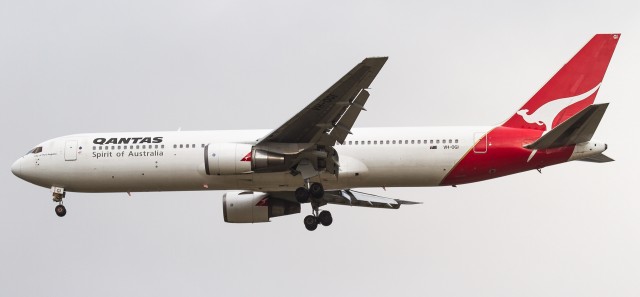
Qantas’ Boeing 767-338ER, a common sight in Australian skies over the past 30 years – Photo: Jacob Pfleger | AirlineReporter
The 27th of December marked the end of an era in Australian aviation. Qantas retired the Boeing 767 fleet from passenger service.
Let’s take a brief look at the history of this true workhorse and Australian icon that has been part of the Qantas fleet for almost 30 years. Qantas took delivery of its first 767, a -200 series extended range aircraft, in 1985. The type was first introduced on the carrier’s services to southeast Asia as well as on trans-Tasman and Pacific routes.
In 1987, the carrier placed an order for the larger -300ER series. The -300ER not only had a larger capacity but also an increased range and more powerful General Electric CF6-80 engines. The 767-300ER was delivered to Qantas in a two-class configuration. There were two variants of this configuration, one for international service which had 25 business class and 204 economy class seats, and the domestic configuration, which had 30 business class seats and 224 economy class seats.
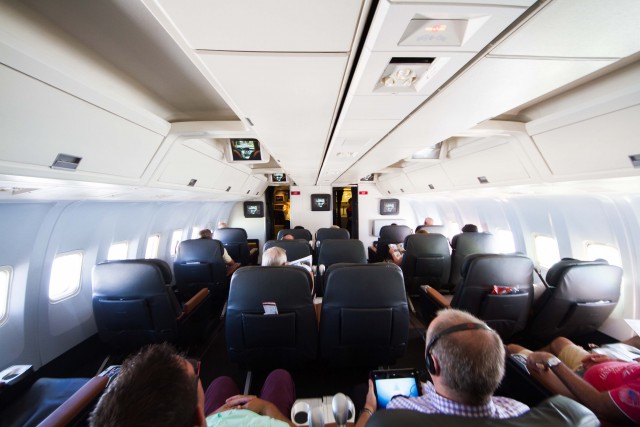
A unique configuration, 1-2-2 on the international version of the Qantas Boeing 767-338ER – Photo: Jacob Pfleger | AirlineReporter
The internationally-configured 767s were unique in that business class was configured in a 1-2-2 layout, and the 767s were the first Australian aircraft to offer in-seat IFE in business class. The economy cabin was also unique in that there was a “pod” at the front of the cabin for crew rest, as well as two rows of seats at the rear portioned off for additional crew rest.
Following the deregulation of the Australian domestic market in 1990, Qantas was permitted to once again operate domestic flight routes. With the introduction of the 767 into the fleet, and the domestic deregulation which allowed for increased passenger demand, Qantas used the 767 on domestic Australian flights. The domestic market is where the aircraft really became a true Australian icon. It was deployed on pretty much every major domestic route within the country; the most popular routes were the transcontinentals to Perth, as well as the main east coast triangle routes connecting Sydney, Melbourne, and Brisbane.
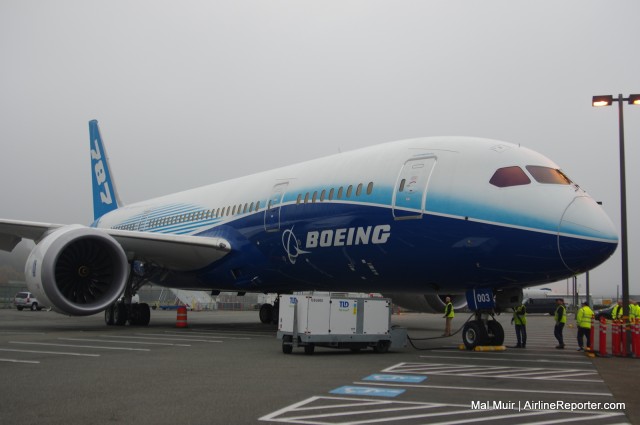
Boeing 787 Dreamliner number 3 (aka ZA003) at the Museum of Flight
Saturday, November 8th at the Museum of flight will forever be known as Dreamliner Day. This Seattle aviation museum is known for many examples of aircraft built in the Seattle area, such as the first 747, the prototype 737, and the only remaining Boeing 80A. But now the Museum has it’s own Boeing 787 Dreamliner, the first museum in the world to have such an aircraft.





